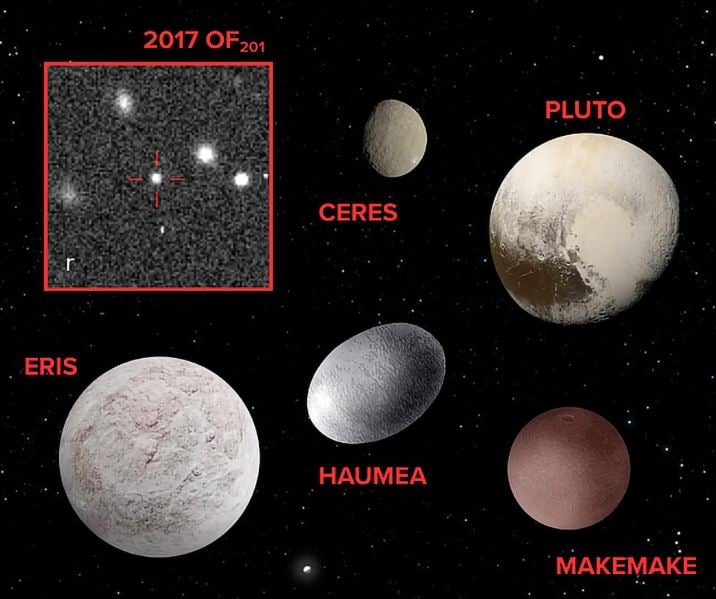
Composite image showing the five dwarf planets recognized by the International Astronomical Union, along with the newly discovered trans-Neptunian object 2017 OF201. Credit: NASA/JPL-Caltech; 2017 OF201 image: Sihao Cheng et al.
A research team led by Sihao Cheng at the School of Natural Sciences at the Institute for Advanced Study has identified 2017 OF201 as a unique trans-Neptunian object (TNO) in the most distant part of the Solar System. Based on its estimated size, 2017 OF201 could meet the criteria for being classified as a dwarf planet, on par with Pluto. The object is among the most distant objects ever observed, and suggests that the Kuiper Belt beyond Neptune, which was thought to be nearly empty, may actually contain more objects.
Cheng, working with colleagues Jiaxuan Li and Eritas Yang of Princeton University, discovered the object using advanced computational techniques to identify unique orbits in the sky. The discovery was confirmed by the International Astronomical Union's Minor Planet Center on May 21, 2025, and published in a preprint on arXiv.
What sets 2017 OF201 apart is its extreme orbit and unusual size. “The object’s aphelion—its farthest point from the Sun—is 1,600 times larger than Earth’s orbit,” Cheng explains. “Meanwhile, its perihelion—its closest point to the Sun—is 44.5 times larger than Earth’s orbit, similar to Pluto.”
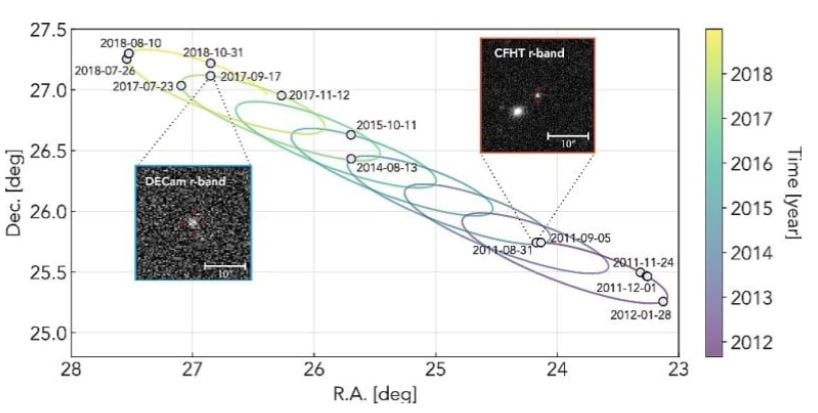
Image of OF2017 from telescope database and its orbit in the sky. Credit: Jiaxuan Li and Sihao Cheng.
A history of turbulent orbits
With an orbital period of about 25,000 years, 2017 OF201 shows a complex gravitational history. “It may have experienced a close encounter with a giant planet, which caused it to be ejected,” Yang said. “The migration process may have been multiple steps, or it may have even been ejected into the Oort cloud and then returned,” Cheng added.
“Many extreme TNOs have orbits that point in certain directions, which has been considered indirect evidence for the existence of Planet X or Planet Nine. But 2017 OF201 is an exception that may challenge this hypothesis,” Li notes.
2017 OF201 is estimated to be about 700 km in diameter, making it the second-largest object ever discovered with such an extended orbit, while Pluto is 2,377 km in diameter. The team said further observations, possibly with radio telescopes, are needed to get a precise measurement of its size.
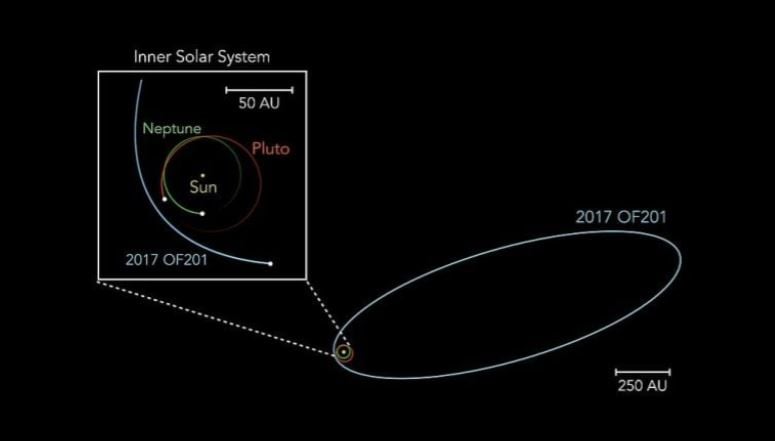
Image showing the current positions of Pluto, Neptune, and 2017 OF201. Credit: Jiaxuan Li and Sihao Cheng
Discovery using telescope data
In his search for TNOs and potential exoplanets, Cheng used image data from the Victor M. Blanco Telescope and the Canada-France-Hawaii Telescope (CFHT). He used a special algorithm to connect the bright spots appearing in the sky into the orbit of a celestial body. Thanks to that, 2017 OF201 was identified in 19 exposures over 7 years.
The discovery has major implications for understanding the region beyond the Kuiper Belt. Once thought to be empty, the existence of 2017 OF201 proves otherwise. “2017 OF201 spends only 1% of its orbit time close enough for us to detect,” Cheng said. “Its presence suggests there could be as many as 100 other objects with similar orbits and sizes that are currently too far away to observe.”
The value of open science
“All the data we use is archived data, accessible to everyone, not just professional astronomers,” Li asserted. “That means groundbreaking discoveries can come from any researcher, student or citizen scientist with the right tools and knowledge.”
According to scientists, this discovery not only changes the understanding of the structure of the Solar System but also emphasizes the importance of sharing scientific resources, expanding opportunities for the global community in the journey of space exploration.
Source: https://doanhnghiepvn.vn/cong-nghe/kham-pha-chan-dong-thien-the-2017-of201-o-ria-he-mat-troi-co-the-la-hanh-tinh-lun-moi/20250903073334209






![[Photo] Hanoi morning of October 1: Prolonged flooding, people wade to work](https://vphoto.vietnam.vn/thumb/1200x675/vietnam/resource/IMAGE/2025/10/1/189be28938e3493fa26b2938efa2059e)



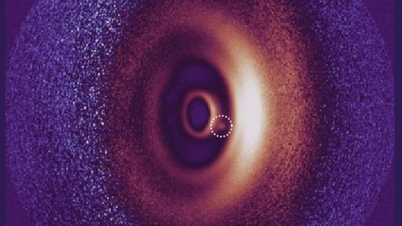

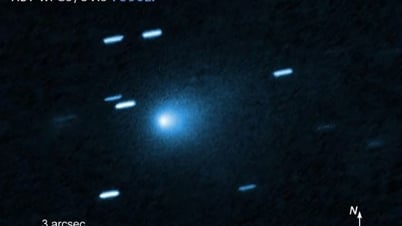


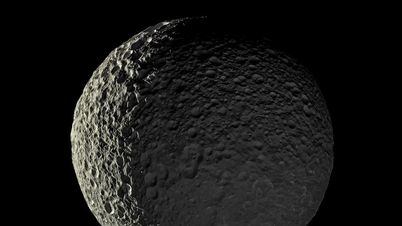



















![[Photo] President of the Cuban National Assembly visits President Ho Chi Minh's Mausoleum](https://vphoto.vietnam.vn/thumb/1200x675/vietnam/resource/IMAGE/2025/10/1/39f1142310fc4dae9e3de4fcc9ac2ed0)


























































Comment (0)